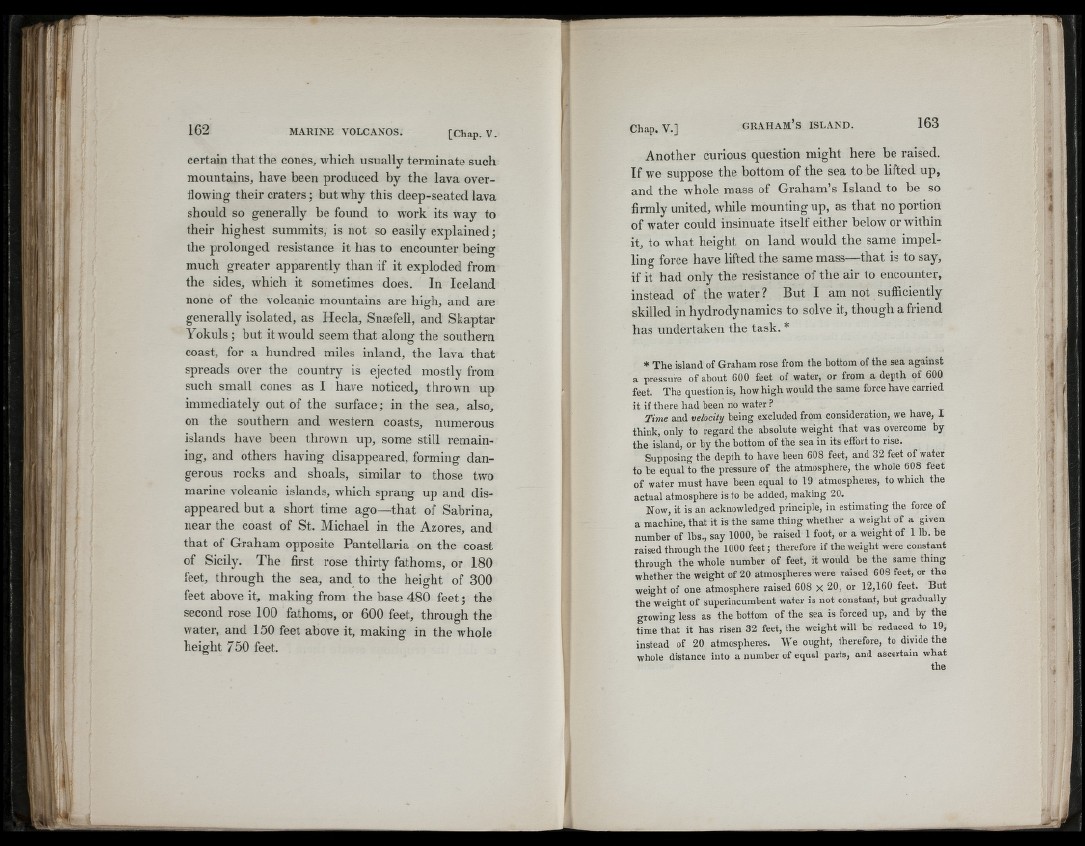
H 'K
i '«
m lí!
iifi
■111
» ^ * -
i l l 4!
certain that the cones, which usually terminate such
mountains, have been produced by the lava overflowing
their craters; but why this deep-seated lava
should so generally be found to w'ork its way to
their highest summits, is not so easily explained;
the prolonged resistance it has to encounter being
much greater apparently than if it exploded from
the sides, which it sometimes does. In Iceland
none of the volcanic mountains are high, and are
generally isolated, as Hecla, Snsefell, and Skaptar
Yokuls; but it would seem that along the southern
coast, for a hundred miles inland, the lava that
spreads over the country is ejected mostly from
such small cones as I have noticed, thrown up
immediately out of the surface; in the sea, also,
on the southern and western coasts, numerous
islands have been thrown up, some still remaining,
and others having disappeared, forming dangerous
rocks and shoals, similar to those tv/o
marine volcanic islands, which sprang up and disappeared
but a short time ago—th a t of Sabrina,
near the coast of St. Michael in the Azores, and
that of Graham opposite Pantellaria on the coast
of Sicily. The first rose thirty fathoms, or 180
feet, through the sea, and to the height of 300
feet above it, making from the base 480 feet; the
second rose 100 fathoms, or 600 feet, through the
water, and 150 feet above it, making in the whole
height 750 feet.
J
Another curious question might here be raised.
If we suppose the bottom of the sea to be lifted up,
and the whole mass of Graham’s Island to be so
firmly united, while mounting up, as that no portion
of water could insinuate itself either below or within
it, to what height on land would the same impelling
force have lifted the same mass—that is to say,
if it had only the resistance of the air to encounter,
instead of the water ? But I am not sufficiently
skilled in hydrodynamics to solve it, though a friend
has undertaken the task. *
* T h e island of Graham rose from the bottom of the sea against
a pressure o f about 600 feet of water, or from a depth o f 600
feet. The question is, how h igh would the same force have carried
it if there had been no water ?
Time and velocity being excluded from consideration, we have, I
think, only to regard the absolute w e igh t tha t was overcome by
the island, or by the bottom of the sea in its effort to rise.
Supposing the depth to have been 608 feet, and 32 feet o f water
to be equal to the pressure o f the atmosphere, the whole 608 fe e t
o f water must have been equal to 19 atmospheres, to which the
actual atmosphere is to be added, making 20.
N ow , it is an acknowledged principle, in estimating the force o f
a machine, that it is the same th in g whether a weight o f a given
number o f lbs., say 1000, be raised 1 foot, or a weight of 1 lb. be
raised through the 1000 feet; therefore if the weight were constant
through the whole number o f feet, it would be the same thing
whether the weight o f 20 atmospheres were raised 608 feet, or the
weight o f one atmosphere raised 608 x 20, or 12,160 feet. But
the w e igh t o f superincumbent water is not constant, but gradually
growing less as the bottom of the sea is forced up, and by the
time th a t it has risen 32 feet, the weight will be reduced to 19,
instead of 20 atmospheres. W e ought, therefore, to divide the
whole distance into a number o f equal parts, and ascertain what
the